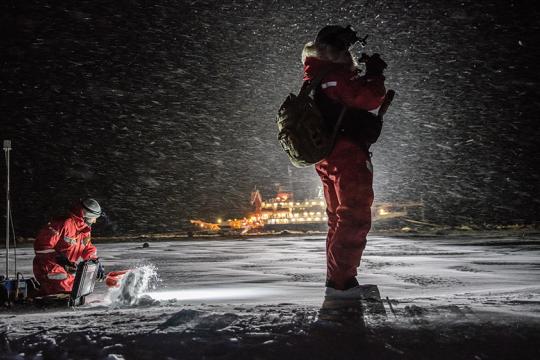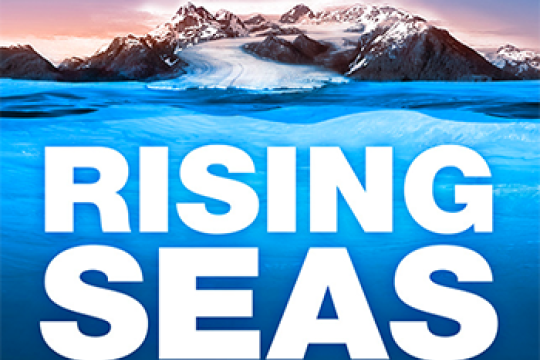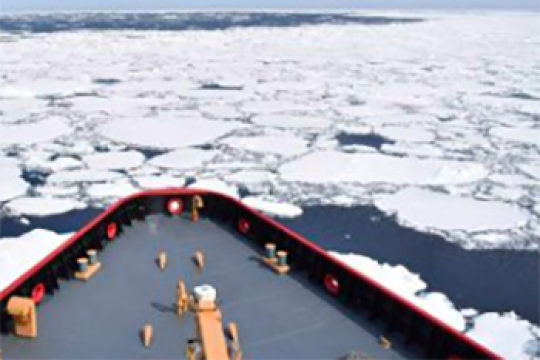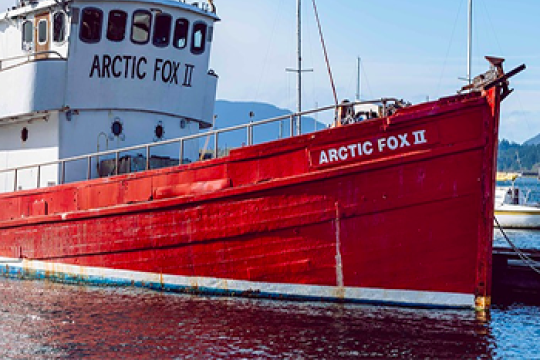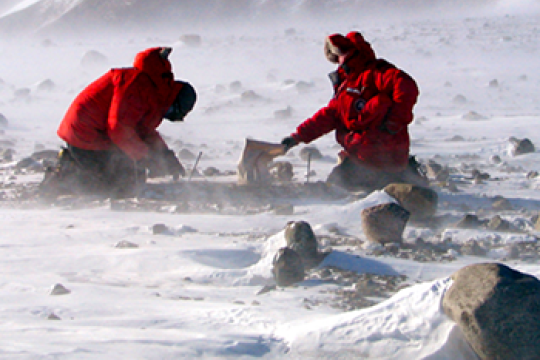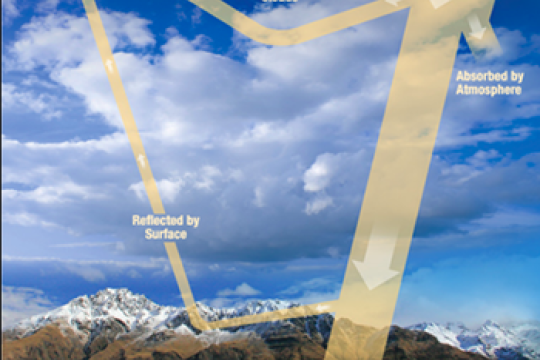Asking questions
Quick Bite: Climate in the Arctic
Why is the Arctic so much colder than the equator? What is the role of sunlight in the Arctic climate system? Explore these questions in this Quick Bite activity.
Project of Mosaic Quick bite
Subject: Asking questions, Climate, Constructing explanations, Earth science, mosaic monday
Grade Level: Middle School, High School
Developer: CIRES
Why is the Arctic so much colder than the equator? What is the role of sunlight in the Arctic climate system? Explore these questions in this Quick Bite activity.
Project of Mosaic Quick bite
Subject: Asking questions, Climate, Constructing explanations, Earth science, mosaic monday
Grade Level: Middle School, High School
Developer: CIRES
Land Ice/Sea Ice: How does melting ice affect sea level?
Students use a simple model to compare sea level rise due to melting land ice versus melting sea ice.
Lesson plan
Subject: Asking questions, Constructing explanations, Developing and using models, Physical science, Sea ice
Grade Level: Middle School
Developer: U.S. Ice Drilling Program
Students use a simple model to compare sea level rise due to melting land ice versus melting sea ice.
Lesson plan
Subject: Asking questions, Constructing explanations, Developing and using models, Physical science, Sea ice
Grade Level: Middle School
Developer: U.S. Ice Drilling Program
Arctic Climate Curriculum: Exploring the Arctic
This activity introduces students to the Arctic, including different definitions of the Arctic and exploration of the Arctic environment and Arctic people. Students set out on a virtual exploration of the geography of the Arctic using Google Earth. Students go on to learn about meteorological parameters that are measured by Arctic research teams and practice the measurements in hands-on activities.
Lesson plan
Subject: Analyzing and interpreting data, Arguing from evidence, Asking questions, Computational thinking, Earth science, Geography, Life science, Obtaining and evaluating information, Physical science, Planning investigations
Grade Level: Middle School, High School, University/college
Developer: CIRES
This activity introduces students to the Arctic, including different definitions of the Arctic and exploration of the Arctic environment and Arctic people. Students set out on a virtual exploration of the geography of the Arctic using Google Earth. Students go on to learn about meteorological parameters that are measured by Arctic research teams and practice the measurements in hands-on activities.
Lesson plan
Subject: Analyzing and interpreting data, Arguing from evidence, Asking questions, Computational thinking, Earth science, Geography, Life science, Obtaining and evaluating information, Physical science, Planning investigations
Grade Level: Middle School, High School, University/college
Developer: CIRES
Design and Build a Sea Ice Drifter
In an engineering design challenge, students learn about sea ice and sea ice observation technology to build and design their own sea ice drifter.
Project of Mosaic Lesson plan
Subject: Asking questions, Constructing explanations, Engineering and technology, Physical science, Sea ice
Grade Level: 3-5
Developer: SMILE Oregon State
In an engineering design challenge, students learn about sea ice and sea ice observation technology to build and design their own sea ice drifter.
Project of Mosaic Lesson plan
Subject: Asking questions, Constructing explanations, Engineering and technology, Physical science, Sea ice
Grade Level: 3-5
Developer: SMILE Oregon State
Polar Bear Tracker
Students will explore the world of polar bear researchers through the PBI Bear Tracker webpage and the Bear Tracker PowerPoint. They will understand how polar bears are studied using radio collar tracking and track bears in real time. Through the inquiry process, create scientific investigable questions just like real researchers, and learn how you can take action to help polar bears.
Lesson plan
Subject: Analyzing and interpreting data, Asking questions, Climate, Ecosystems, Life science
Grade Level: Middle School, High School
Developer: Polar Bears International
Students will explore the world of polar bear researchers through the PBI Bear Tracker webpage and the Bear Tracker PowerPoint. They will understand how polar bears are studied using radio collar tracking and track bears in real time. Through the inquiry process, create scientific investigable questions just like real researchers, and learn how you can take action to help polar bears.
Lesson plan
Subject: Analyzing and interpreting data, Asking questions, Climate, Ecosystems, Life science
Grade Level: Middle School, High School
Developer: Polar Bears International
Arctic Climate Curriculum: Do you really want to visit the Arctic?
This jigsaw activity is designed for students to become familiar with several datasets of Arctic weather data, collected in Eureka on Ellesmere Island. Students join a role-playing activity to read and interpret graphs while considering the optimal time to plan a research mission to the Arctic.
NGSS Aligned Lesson plan
Subject: Analyzing and interpreting data, Arguing from evidence, Asking questions, Climate, Computational thinking, Constructing explanations, Earth science, Obtaining and evaluating information, Physical science
Grade Level: Middle School, High School, University/college
Developer: CIRES
This jigsaw activity is designed for students to become familiar with several datasets of Arctic weather data, collected in Eureka on Ellesmere Island. Students join a role-playing activity to read and interpret graphs while considering the optimal time to plan a research mission to the Arctic.
NGSS Aligned Lesson plan
Subject: Analyzing and interpreting data, Arguing from evidence, Asking questions, Climate, Computational thinking, Constructing explanations, Earth science, Obtaining and evaluating information, Physical science
Grade Level: Middle School, High School, University/college
Developer: CIRES
Albedo: measuring the reflective properties of different surfaces
Students measure the albedo and surface temperature of various ice surfaces and changing processes as the ice melts over time. Students apply what they’ve learned in the experiment to the understanding of albedo, and the role albedo plays in the Earth’s energy budget.
NGSS Aligned Lesson plan
Subject: Analyzing and interpreting data, Asking questions, Developing and using models, Earth science, Obtaining and evaluating information, Physical science, Planning investigations, Sea ice
Grade Level: Middle School, High School, University/college
Developer: U.S. Ice Drilling Program
Students measure the albedo and surface temperature of various ice surfaces and changing processes as the ice melts over time. Students apply what they’ve learned in the experiment to the understanding of albedo, and the role albedo plays in the Earth’s energy budget.
NGSS Aligned Lesson plan
Subject: Analyzing and interpreting data, Asking questions, Developing and using models, Earth science, Obtaining and evaluating information, Physical science, Planning investigations, Sea ice
Grade Level: Middle School, High School, University/college
Developer: U.S. Ice Drilling Program
